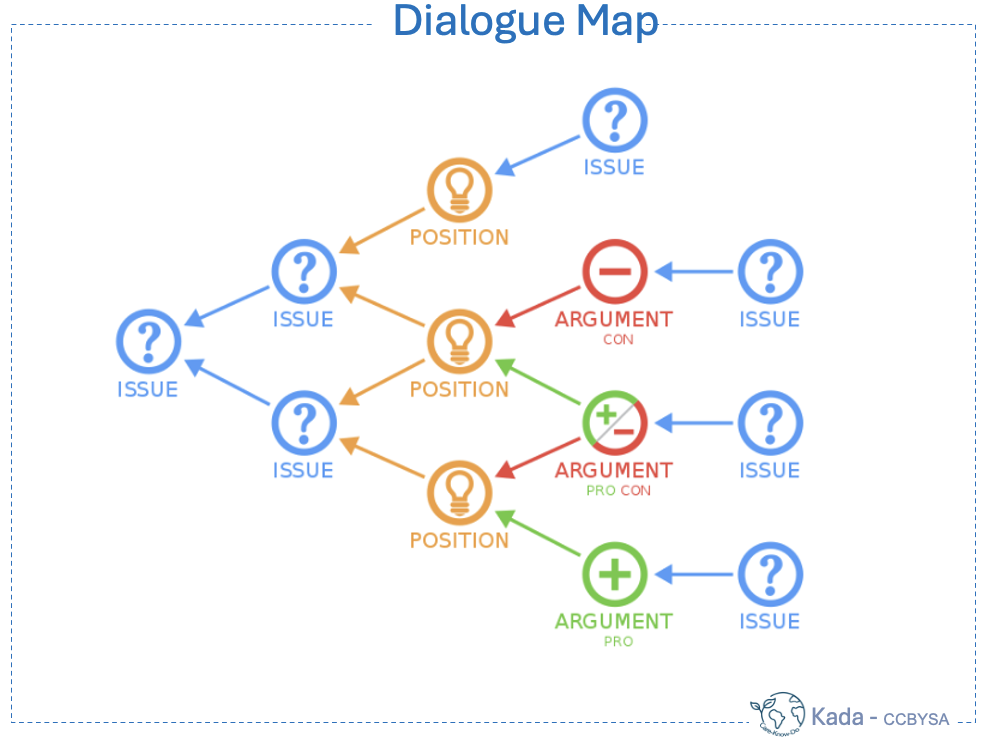Dialogue mapping is a technique for recording and organising a discussion through issues, positions, pros, and cons.
It was inspired by scientists Werner Kunz and Horst Rittel in the 60s.
Dialogue maps help to make decisions and solving problems.

How can we create a dialogue map?
- Initiate with a problem or issue to be addressed.
- Identify various positions.
- Gather arguments that support or challenge these positions.
- Back up each argument with relevant facts.
- Develop new questions, answers, and rationales.
- Highlight the conclusion or decision.
Dialogue maps can be used by a team to capture and guide the discussion,
present a complex issue and propose a solution.
Complex problems do not have a true-or-false answer but good-or-bad alternatives;
so guidance by experts are useful to reflect on the choices.
Our studies show that students can discuss their views using AI mapping tools
to expand and evaluate their dialogue maps.
The combination of AI and experts enhances their critical and collective thinking.